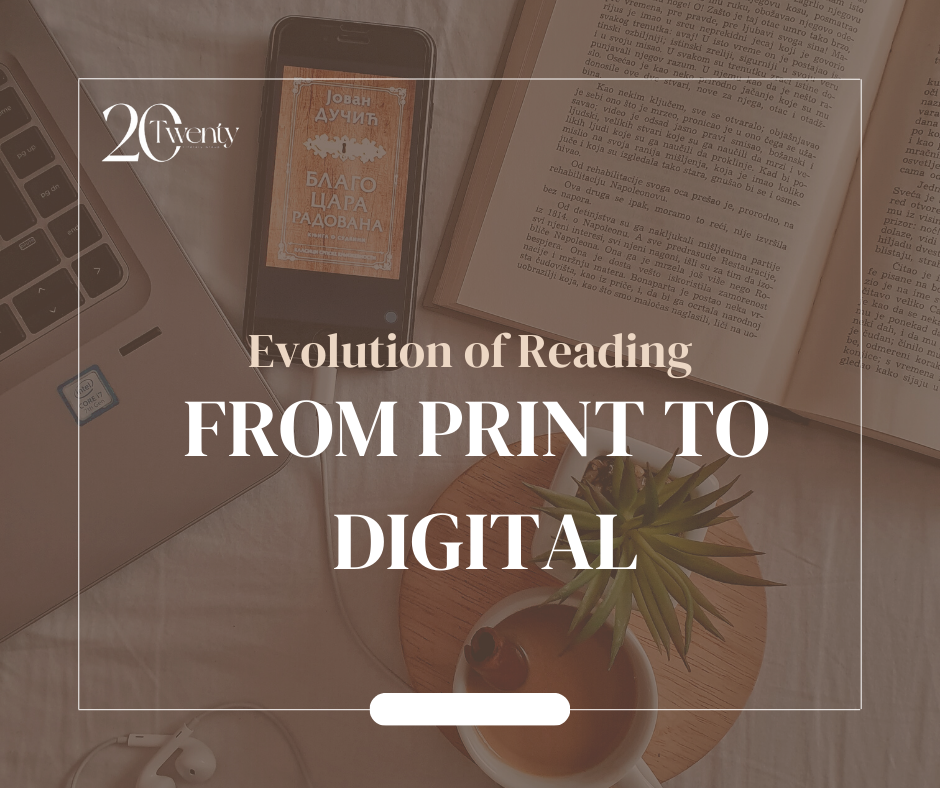In the grand narrative of human communication, reading stands as an ever-evolving chapter. Over the past few decades, we’ve witnessed a profound shift from traditional print books to digital reading platforms. This transition has redefined not only how we access written content but also how we engage with it. In this article, we will explore the advantages and disadvantages of each format and how this transformation has affected the way we read.
The Advantages of Traditional Print Books
Tangible Experience: Print books offer a tactile and sensory experience that digital formats cannot replicate. The smell of ink on paper, the feel of pages turning, and the weight of a physical book in hand create a unique reading ambiance.
Visual Appeal: Printed books often feature aesthetically pleasing covers, typography, and design layouts. For many, the physical presentation of a book is an art form in itself.
No Screen Fatigue: Unlike digital screens, printed pages do not emit blue light, reducing the risk of eye strain and disrupted sleep patterns often associated with prolonged digital screen use.
Minimal Distractions: Print books don’t come with notifications, pop-up ads, or hyperlinks, allowing readers to immerse themselves in the text without interruptions.
The Advantages of Digital Reading Platforms
Accessibility: Digital formats make literature more accessible. E-books can be instantly downloaded from anywhere with an internet connection, breaking down geographical barriers.
Portability: A single e-reader or tablet can hold an entire library of books, making it convenient for travelers or readers with limited storage space.
Customization: Digital platforms allow readers to adjust font sizes, styles, and background colors to accommodate individual preferences and improve readability.
Search and Annotate: E-books enable readers to search for specific keywords, highlight text, and add annotations. This facilitates research, note-taking, and revisiting favorite passages.
The Disadvantages of Traditional Print Books
Limited Portability: Print books can be heavy and bulky, making it impractical to carry a library of books while traveling or commuting.
Environmental Impact: The production of print books involves paper and ink, contributing to deforestation and pollution. Additionally, shipping printed books can have a carbon footprint.
Inaccessibility: Printed books can be inaccessible to people with certain disabilities, such as visual impairments, without the use of specialized formats like large print or Braille.
The Disadvantages of Digital Reading Platforms
Screen Fatigue: Prolonged screen time from digital reading can lead to eye strain, disrupted sleep patterns, and a sedentary lifestyle if not managed carefully.
Digital Distractions: Digital platforms come with the temptation of distractions, including social media, emails, and other apps, which can disrupt the reading experience.
Privacy Concerns: E-books may collect data on readers’ preferences and behaviors, raising privacy concerns for some users.
Changing Reading Habits and Practices
Diverse Reading Habits: The shift to digital reading has led to diversified reading habits. Some readers prefer the convenience of e-books, while others cherish the physicality of print books.
Multimodal Reading: Digital formats have introduced multimedia elements to reading, such as embedded videos, interactive graphics, and hyperlinks, expanding the possibilities of storytelling.
Accessibility: Digital platforms have improved accessibility for individuals with disabilities, with features like screen readers and adjustable fonts.
Conclusion: The Coexistence of Formats
The evolution of reading from print to digital has not resulted in the obsolescence of one format in favor of the other. Instead, it has expanded the options available to readers. The choice between print and digital often depends on individual preferences, circumstances, and the type of content being consumed. In this ever-changing landscape, what remains constant is the enduring love of reading and the power of literature to inform, entertain, and inspire readers in both print and digital realms.

